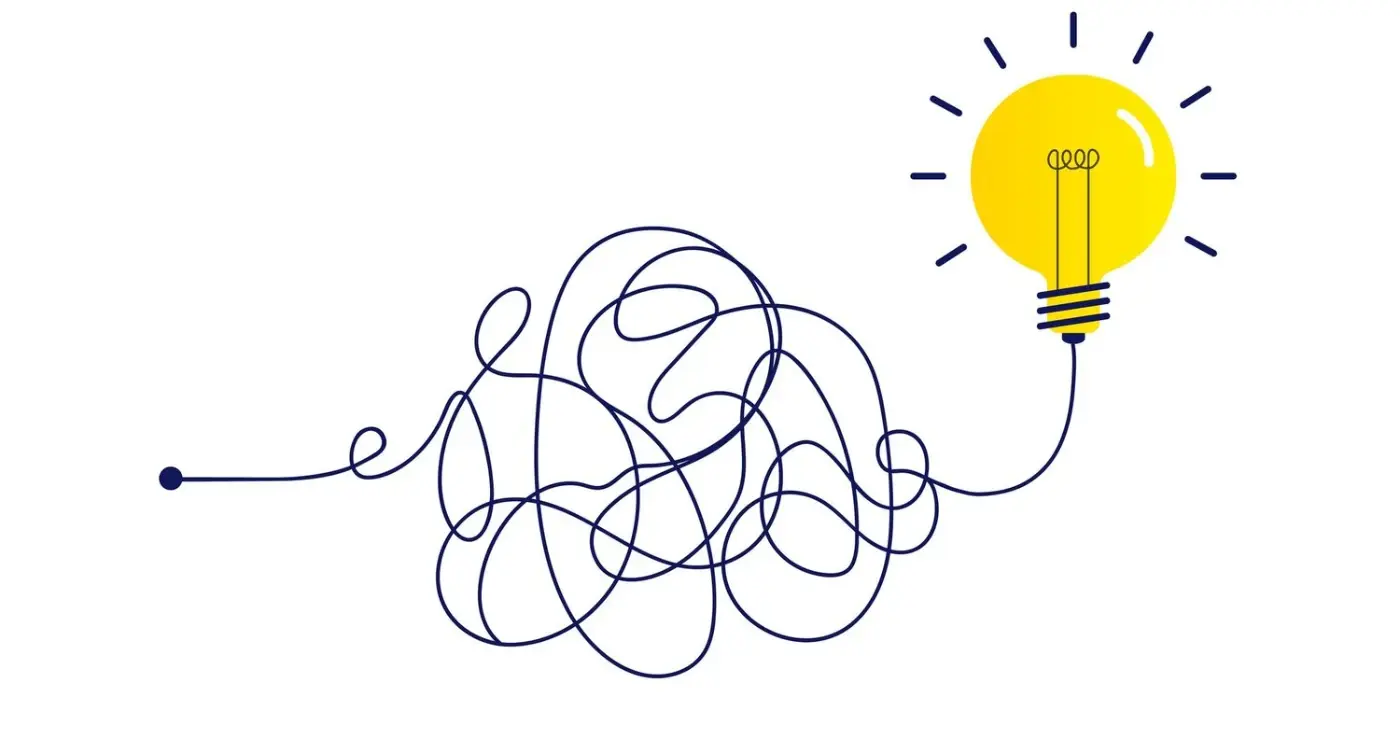What Makes Some Banking Apps More Successful Than Others?
Every day, millions of people unlock their phones and open banking apps to check balances, transfer money, or pay bills. Some apps get deleted within minutes of downloading, whilst others become so loved that users can't imagine banking any other way. The difference between success and failure in fintech isn't just about having the right features—it's about understanding what truly drives user adoption.
After working with countless financial apps over the years, I've noticed something interesting. The most successful banking apps aren't always the ones with the most features or the biggest marketing budgets. They're the ones that solve real problems in ways that feel natural and trustworthy. They understand that when people are dealing with their money, every interaction matters.
The best banking apps don't just digitise traditional banking—they reimagine what banking should feel like in the first place
Getting a competitive advantage in fintech means looking beyond the obvious. It's about understanding that your app isn't just competing with other banks; it's competing with every smooth, fast, and intuitive app your users have ever experienced. This guide explores the key factors that separate the banking apps people love from the ones they tolerate—and what that means for anyone building financial products today.
Why User Experience Matters More Than Features
I've worked on banking apps for years now, and one thing that always surprises me is how many banks still think features are king. They'll pack their apps with everything—budgeting tools, investment trackers, loan calculators, currency converters—you name it. But here's the thing: most people don't use half of these features. What they do care about is whether they can check their balance quickly without wanting to throw their phone at the wall.
The most successful banking apps I've seen focus on making the basics brilliant rather than adding bells and whistles. Chase's mobile app, for example, doesn't have the most features in the world, but millions of people use it daily because it's simple and reliable. Compare that to some traditional banks whose apps feel like they were designed by committee—loads of options but finding what you need takes forever.
What Makes Users Actually Happy
When we talk to real banking app users, the same things come up time and time again:
- Finding account balances in seconds, not minutes
- Transferring money without multiple confirmation screens
- Clear, readable text that doesn't require a magnifying glass
- Logical navigation that makes sense to normal people
- Quick login options like fingerprint or face recognition
Notice how none of these are flashy features? They're all about making banking feel effortless. That's what keeps users coming back—not the ability to categorise expenses into seventeen different subcategories.
The Power of Trust and Security in Banking Apps
When it comes to banking apps, trust isn't just nice to have—it's absolutely everything. I've worked with several financial institutions over the years, and the ones that succeed understand this fundamental truth: people won't use an app they don't trust, no matter how beautiful or feature-rich it might be.
The difference between a successful banking app and one that struggles with user adoption often comes down to how well they communicate security. Users need to feel confident that their money and personal information are safe. This means implementing robust security measures, yes, but more importantly, it means making those security features visible and understandable to everyday users.
Building Security That Users Can See
The best banking apps don't hide their security features—they showcase them. Biometric login, two-factor authentication, and real-time transaction alerts aren't just security tools; they're trust-building features that give users peace of mind.
Always explain security features in simple terms. Instead of saying "256-bit encryption," tell users "your data is protected by military-grade security."
What Users Look For
- Clear explanations of how their data is protected
- Instant notifications for account activity
- Easy ways to report suspicious activity
- Transparent privacy policies written in plain English
- Quick access to customer support when something goes wrong
Fintech companies have gained their competitive advantage by making security feel approachable rather than intimidating. Traditional banks that adopt this mindset see much higher user adoption rates and stronger customer loyalty.
Making Complex Banking Simple for Everyone
Banking apps that succeed understand one fundamental truth—people want to do their banking without thinking about it. I've worked with financial institutions who started with apps that looked like they'd been designed by accountants for accountants. Dense menus, confusing terminology, and workflows that required a degree in banking to understand.
The best banking apps strip away the complexity. They use plain English instead of banking jargon. "Transfer money" works better than "Initiate funds transfer". Simple language makes people feel confident about what they're doing, which is exactly what you want when dealing with money.
Breaking Down Complex Features
Smart banks reorganise their services around what people actually want to do. Here's how successful apps simplify common banking tasks:
- Show account balances upfront—no digging through menus
- Group related actions together (all card controls in one place)
- Use visual indicators instead of text where possible
- Break multi-step processes into clear, numbered stages
- Provide helpful explanations without overwhelming users
The magic happens when complex banking feels effortless. Users shouldn't need to learn your app; your app should work the way they already think. This means putting the most-used features front and centre whilst hiding advanced options behind clearly marked "More" sections.
When you get this right, people actually enjoy using your banking app. And that's when you know you've won.
How Speed and Performance Impact User Adoption
I've worked on plenty of banking apps over the years, and there's one thing that kills user adoption faster than anything else—slow performance. People expect their banking apps to work instantly. When someone wants to check their balance or transfer money, they don't want to wait around watching loading spinners. They want it done now.
Think about it this way: if your banking app takes more than three seconds to load, users will start looking elsewhere. That's not just my opinion—it's what the data shows us time and time again. Speed isn't just nice to have in fintech; it's what separates the winners from the losers.
Performance Drives Trust
A slow app doesn't just frustrate users—it makes them question whether they can trust you with their money. When an app crashes during a transaction or freezes whilst checking account details, people start wondering if their bank is reliable at all.
Users judge the reliability of their bank by how fast and smooth their app performs during everyday tasks
The most successful banking apps understand this connection between speed and trust. They invest heavily in performance optimisation because they know it gives them a massive competitive advantage. When your app consistently performs well, users stick around and recommend it to others. That's how you build lasting user adoption in the fintech space.
Building Apps That Work for All Types of Users
When I'm working with banking clients, one of the biggest challenges we face is making sure the app works for everyone—and I mean everyone. You've got your 18-year-old student who's never been inside a bank branch, your 65-year-old retiree who still prefers paper statements, and your busy parent juggling three kids whilst trying to transfer money for school trips. Each person needs the same app to make sense to them.
Different Users, Different Needs
The mistake I see banks make is assuming all their customers think the same way. They don't. Some people want every feature imaginable right on the home screen; others just want to check their balance without getting confused by buttons they'll never use. The successful banking apps we've built solve this by letting users customise their experience—simple modes for basic users, advanced features for power users.
Making Technology Accessible
Accessibility isn't just about following guidelines (though that's important too). It's about recognising that some people have shaky hands, others struggle with small text, and many find complex navigation overwhelming. The best banking apps work beautifully whether you're using voice commands, large fonts, or just your finger on a screen. When we get this right, everyone benefits—not just people with specific needs.
The Role of Innovation in Staying Ahead
Innovation in banking apps isn't about adding flashy features that nobody asked for—it's about solving real problems in clever ways. I've watched countless fintech startups disrupt traditional banks simply by thinking differently about everyday banking tasks. The most successful apps don't just copy what everyone else is doing; they find gaps in the market and fill them with smart solutions.
Take payment splitting, for example. Traditional banks took years to realise that people wanted to split restaurant bills easily with friends. Meanwhile, fintech companies built entire platforms around this simple need. That's the power of innovation—spotting what users actually want before your competitors do.
Types of Innovation That Drive Success
- Predictive spending insights that help users budget better
- Instant notifications for unusual account activity
- Voice-activated banking commands
- AI-powered customer support that actually works
- Seamless integration with third-party financial tools
The key is balancing innovation with reliability. Users want new features, but they want them to work perfectly every time. A buggy innovative feature will hurt user adoption faster than having no innovation at all.
Focus on solving one problem brilliantly rather than adding ten mediocre features. Users will remember apps that make their lives genuinely easier, not ones that simply offer more options.
Smart banks are now partnering with fintech companies rather than competing with them. This gives them access to cutting-edge technology whilst maintaining their established trust and security standards—creating a competitive advantage that's hard to beat.
What Banks Can Learn from Fintech Success Stories
Traditional banks have been around for centuries, but fintech companies have managed to win over millions of users in just a few years. How did they do it? The answer lies in how they think about their customers and build their apps.
Fintech companies like Revolut, Monzo, and Starling Bank didn't try to recreate old banking systems on mobile phones. Instead, they started fresh and asked a simple question: what do people actually want from their banking app? They discovered that users wanted speed, simplicity, and control over their money.
Key Lessons from Fintech Winners
These successful fintech apps share some common approaches that traditional banks can learn from:
- They make account opening quick and painless—often taking just minutes
- They show spending insights and budgeting tools that actually help users
- They use plain English instead of confusing banking jargon
- They send helpful notifications, not annoying spam
- They design for mobile first, not desktop
The biggest lesson? Fintech companies treat their app as the main product, not just a side project. They invest heavily in user research, testing, and continuous improvement. Traditional banks that embrace this mindset—putting user needs first and building from there—are the ones that will thrive in the mobile banking world.
Conclusion
After spending years working with banks and fintech companies, I can tell you that the difference between successful and unsuccessful banking apps isn't what most people think. It's not about having the fanciest features or the biggest marketing budget—it's about understanding what users really need and delivering it brilliantly.
The most successful banking apps share common traits: they're fast, simple to use, and make people feel safe. They work well for everyone, not just tech-savvy users. They solve real problems without creating new ones. And here's the thing—traditional banks can absolutely compete with fintech startups if they focus on these basics.
User adoption happens when people trust your app enough to use it regularly; competitive advantage comes from doing the fundamentals better than everyone else. The banks that get this right don't just survive—they thrive. They build apps that people actually want to use, not just apps they have to use.
Building a great banking app isn't rocket science, but it does require discipline. Focus on speed, simplicity, and security. Test everything with real users. And remember that innovation should solve problems, not create complexity. Get these right, and you'll have built something that stands the test of time.
Share this
Subscribe To Our Learning Centre
You May Also Like
These Related Guides

What Features Should You Remove to Beat Competitors?

How Much Does It Really Cost to Build a Fintech App?



